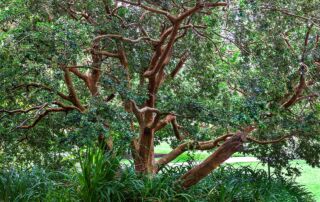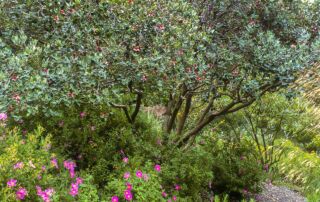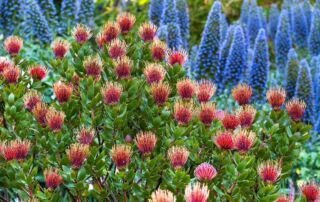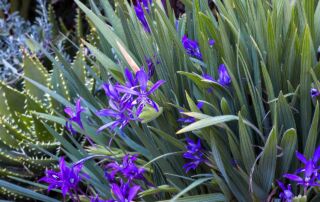Chilean Myrtle
Luma apiculata, sometimes known as Chilean myrtle, is a small to mid-sized, usually multitrunk or low-branching, evergreen tree. Leaves are small, leathery, dark green, and broadly oval with a short, acutely pointed tip. Bark is smooth and grayish tan, turning cinnamon brown with age and peeling to reveal patches of white beneath. Masses of fragrant, creamy white, mid-summer flowers with showy, brushlike, pinkish white stamens are followed by edible, purplish black berries in fall. Limbed up and out of flower, trees can resemble a manzanita or a madrone, to which they are not related. Luma apiculata is







